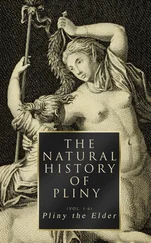With the accession of Wŭn-jong to the throne of Sil-la in 514 the Chinese custom of conferring a posthumous title upon a deceased king was introduced for the first time into Korea. Long before this the custom had prevailed in Ko-gu-ryŭ of naming a dead king after the place in which he was buried but to the very last the Ko-gu-ryŭ kings did not receive posthumous honorific titles. Păk-je however followed Sil-la’s example ten years later.
King Pŭp-heung of Sil-la in 520 reorganised the official list and indicated the different grades of rank by different colors. The grades called t’a-do , kak-kan and ta-a-son wore lavenderlavender. Those called a-son and keup-son , wore red, and carried the ivory memo tablets that are common today. The ta-na-ma and the na-ma wore blue. The ta-sa and sun-jo-ji wore hats of silk, shaped like the broad-brimmed, round crowned hats of the chair-coolie of the present day. The pa-jin-son and the ta-a-son wore red silk hats. The sang-dang , chuk-wi and ta-sa wore red hat strings. The kaleidoscopic colors of a royal Korean procession of today indicate what a prominent role the love of color plays in the oriental temperament.
The Wei power in China was not pleased with the friendship that was springing up between Ko-gu-ryŭ and the Liang court. This came to a climax when she stoppedstopped a Liang envoy who was on his way to Ko-gu-ryŭ to confer investiture upon the king. It may be that Ko-gu-ryŭ realised that the Wei dynasty was waning to its close and that it was well to cultivate the good-will of the young and rising Liang power; but if so the forecast was false for the Liang power outlived the Wei only twenty-four years.
The year 524 gave Sil-la Buddhism a new lease of life. Its most celebrated representative was a monk named Muk Ho-ja who lived about the middle of the fifth century. Coming from Ko-gu-ryŭ he had settled at the town of Il-sŭng-gun where a Sil-la citizen had made him a cave dwelling. The king of Sil-la received a gift of incense from China, but did not know how to use it till this monk Muk Ho-ja showed him how. He told the king to burn it and ask anything of the spirits, and they would grant it. The king’s daughter was very ill at the time and the king burned the incense and asked that his daughter be healed. The story says that she immediately arose from her bed a well woman. This of course gave Buddhism a long start. Since that time, as we have seen, Buddhism had suffered a severe drawback in the person of the wicked monk who was discovered in the act of abusing his sacerdotal function. It had recovered from that shock however and had again assumed large proportions in the state of Sil-la. The king had come so completely under the influence of the monks that now in 524 the courtiers feared that their power would be seriously threatened. They therefore used every means to induce the king to moderate his views. The king gave his reluctant assent to the execution of the high priest, Yi Cha-don. Tradition says that when he was brought to execution he exclaimed “When you slay me, my blood will flow not red like blood but white as milk and then you will know that Buddhism is true.” And so it proved, for when his head was severed from the trunk his blood flowed white like milk. None could gainsay this evidence and from that day Buddhism advanced with rapid steps. The following year the king made a law against the killing of animals.
The kingdom of Ka-rak had existed side by side with Sil-la on terms of mutual friendship for four hundred and eighty-two years, but in 527 her king, Kim Ku-hyŭng, gave up his sovereign power and merged his kingdom into that of Sil-la. He was however retained at the head of the Ka-rak state under appointment by the king of Sil-la. It does not appear from the scanty records that this was other than a peaceful change. Ka-rak had long seen the growing power of Sil-la and doubtless recognised that more was to be gained by becoming part of that kingdom than by standing aloof and running the chance of becoming disputed territory between the rival powers of the peninsula. She had been founded in 41 A.D. and now she came to an end in 527, so her lease of life seems to have been four hundred and eighty-six years rather than four hundred and eighty-two as the records state. As the dates of her beginning and end are both taken from the records the discrepancy must be laid at the door of the recorder.
READY FOR THE ROAD.
About this time Sil-la discovered that it was useless to cultivate the friendship of the Chinese powers. The Chinese territory was divided into a number of petty kingdoms and more were on the eve of being founded. None of them had strength enough to hold her own against the others, much less to be of any avail in case of trouble in the peninsula. Perhaps it was for this reason that in 535 Sil-la rejected the Chinese calendar and named the year according to a plan of her own. In China the Liang dynasty, the Northern Wei, and the Eastern Wei were all in the field, while the Ch’en, the Northern Ch’i, the Northern Chu and the Sui dynasties were just about to make their appearance and all to pass away like summer clouds before the power of the mighty T’ang.
About the year 540 Păk-je moved her capital again; this time it was to Sa-ja the site of the present prefecture of Pu-yŭ in the province of Ch’ung-ch’ŭng. She seems to have had some aspirations after better things, for in 541 she sent to the Liang court asking that books of poetry, teachers of literature, Buddhist books, artisans and picture painters be sent to help in creating a taste for literature and art in that country. The request was granted.
The year 543 marks an important event in the life of Sil-la. The history of that country existed as yet only in the form of notes, but now the king ordered that a congress of the best scholars of the land set to work compiling a proper history under the leadership of the great scholar Kim-gŭ Ch’il-bu. We will notice that this was about two hundred years before the earliest date that is set for the publication of the Japanese work entitled the Kojiki. And it should be noticed likewise that this history of Sil-la was not a collection of myths and stories only, but a proper history, worked up from government records which a certain degree of knowledge of Chinese had rendered the officials capable of making and transmitting. One needs but to compare the Kojiki with the Sam-guk-sa or “History of the Three Kingdoms” founded on these records to see how immeasurably the latter excels the former as a source of accurate historical evidence.
It was about this time that the wild tribes of the Mal-gal and Ye-măk began to realise that the continued progress of Păk-je and Sil-la meant extinction for themselves. So in 547 they joined Ko-gu-ryŭ in an attack upon Păk-je; but Sil-la and Ka-ya rendered aid to Păk-je and the northern allies were driven back. From this time on, during a period of several years, Ko-gu-ryŭ, Ye-măk and Mal-gal were allies, and Sil-la, Păk-je and Ka-ya were allies; a sort of dual arrangement, which preserved a nice equilibrium in the peninsula.
In 549 the king of Păk-je sent an envoy to present his compliments to the Liang Emperor. When he arrived at the capital of the Liang power he found the palace in ashes and the reins of government in the hands of the usurper Hu-gyŭng; so he took his stand before the Tan-mun (gate) and wept aloud from morning till night. The passers-by, hearing his story, stopped and wept with him. This of course did not please the usurper, and the envoy was seized and thrown into prison where he stayed until the rebellion was put down and the Emperor returned. As the Ch’i dynasty arose in 550 we are not surprised to learn that Ko-gu-ryŭ sent an envoy immediately to do obeisance and get into the good graces of the new power.
Читать дальше












